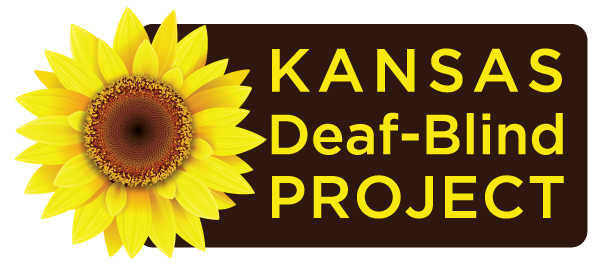KS Deaf-Blind Educators > Communication
Understanding Coactive and Tactile Signing | CA
Coactive signing and tactile signing are two different types of adapted sign language used to communicate with children who are deaf-blind.
Individuals who have limited or no functional use of their vision and hearing are often unable to understand what is about to happen to them.
Tips for Improving the Accuracy of Signed Communication | CA
Every sign in signed communication—whether the sign comes from American Sign Language, Signing Exact English (SEE), or another sign language/system—is made up of four parameters.
We communicate a lot of information about our feelings through our body language: our facial expression, the way we position ourselves, distance from others, and gestures.
Students who are deaf-blind frequently use their senses of touch and movement to get information about the activities, people and places around them.
Strategies for Using Voice Output Communication Devices With Children who are Deaf Blind | CA
A voice output device is an electronic device that “speaks” for a child.
Communication requires a person to send a message and another person to receive or understand the message. Receptive communication is the process of receiving and understanding a message.
Many students who are deaf-blind need a variety of communication systems for their different needs and settings. Using objects for communication is a form which is easily understood by most listeners in both new and familiar situations.
A name cue is a physical touch cue that someone who is deaf-blind uses to identify the important people in his or her life.
How to Create a Communication Dictionary | CA
It is common for teachers as well as other education and service providers to meet an individual with deaf-blindness and/or multiple disabilities for the first time, and not know how to communicate with that individual
Creating A Need to Communicate | CA
Individuals with dual sensory impairments may show beginning communication skills in many ways. This communication may take the form of body movement, gestures, facial expressions, vocalizing, use of objects or people, pointing to pictures, or more formal systems.
Creating Communication Rich Environments | (CA CO)
Everyone communicates Children who are deafblind are communicating all the time. Some children communicate in very obvious ways: speech, signed communication, sign language, pictures and drawings, voice output boards, etc.
Often children will participate in exciting activities at school or at home. We want them to share this excitement and “talk” to others about the activity — either at home or at school.
Communication What are they trying to tell me | CA
Some students who are deaf-blind cannot express some or all of what they want to communicatethrough speech, sign language, fingerspelling, or writing.
Choices at the Swimming Pool | NV
Providing children with choices is a powerful tool for communication purposes as well as for managing potential problem behaviors.
